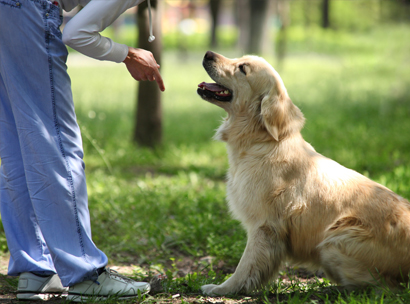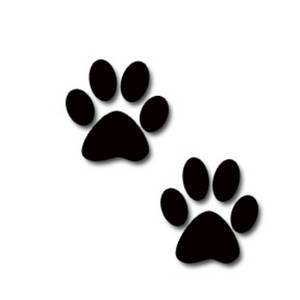-
Often when people ask about ‘why we use food’ the responses are ‘reward your dog’, ‘pay them for their work’ and so on, which is essentially true but its actually a lot more scientific than ‘just giving food’.
Most of the time people dont really want the ‘nitty gritty’ but I like to understand the ‘why’ of things so I thought that I would go into a (little) more depth about the role of food in training, specifically when used in ‘operant conditioning’ (think training specific behaviours, sit, stand, down, wait and so on – I do go into this a little more below).
Hopefully this will help you have a better understanding of the ‘why’ & as a side note whilst this article is about the use of ‘food’, it can actually be anything that the dog finds reinfrocing (games, toys, praise & so on).
Why do we use food in training??
This is a common question, usually followed by ‘I dont want a dog that will only do ‘stuff’ for food’ –
Guess what, neither do I !
If we end up with a dog that will only work for food – we have failed the dog & failed in our training!!!
When used in training, food is ‘added reinforcer‘ (often called ‘reward’ ) – this is also referred to as ‘positive reinforcement’ (which simply means we have added something to reinforce the behaviour) & is used for the purpose of increasing the likelihood of the behaviour we are conditioning (training).
One of the benefits for using is food is that food is required for survival, which is pretty straight forward – we dont eat, we die!
The other benefit is that eating is not something that needs to be conditioned (trained), ‘food’ is an ‘unconditioned reinforcer‘ – meaning we dont need to train our dog how to eat.
This makes food potentially a highly effective reinforcer when used in training.
So the next question is ‘what is an added reinforcer’???
From a technical science perspective a Reinforcer is a stimulus that, when presented or removed contingent on a behavior, increases (or maintains) the future level of that behavior across subsequent occasions ‘ and an Added Reinforcement (+R) (Commonly referred to as ‘positive reinforcement’) is a behavior change process in which the addition of a stimulus during or immediately following a response, results in an increase in the rate or relative frequency of the operant on subsequent occasions[1]
In less technical terms, this means that as part of the training (conditioning) of a behaviour we are adding a reinforcer (reward) to increase the rate of the behaviour occurring.
How do dogs learn?
To understand the purpose of food (or other reinforcers) we need to consider how dogs (and all animals including humans) learn. At the most simple level we all learn through ‘consequence’ or ‘pairing’ (association), where by the behaviour occurs through ‘operant conditioning’ or ‘respondent conditioning’ (commonly referred to as ‘classical conditioning’).
For this article we are talking about training through ‘operant conditioning’ in which the behaviour is sensitive to the consequence and includes behaviours such as sit, stand, down and recall and so on.
This means that what happens immediately after (or during) the behaviour determines whether the behaviour will increase or decrease.
Consequences can be divided into different types, depending on whether the consequence increases or decreases the likelihood of the behavior, and whether the stimulus was added or subtracted during or immediately following the behavior.
Where we are adding food, this is an added reinforcer for the purpose of increasing (& strengthening) a behaviour .(‘positive reinforcement’)
So how does food help during training??
In operant conditioning there is always at least 3 ‘parts’ (a three-term contingency) involved that are functionally related & you may have read or heard this referred to as the ‘ABCs’ which stand for the following:
- the antecedent – what comes immediately before the behaviour to evoke it (the ‘evocative stimulus)
- the behaviour – evoked by the antecedent
- the consequence – follows immediately after (or during) the behaviour and operates on the both the antecdent and behaviour – increasing or decreasing the likelihood of the behviour occurring.
For example teaching a dog to ‘sit’
- We ask our dog to ‘sit’ (the antecedent that evokes (causes) the behaviour – this is also technically referred to as an ‘evocative stimulus)
- The dog sits (the behaviour, which is evoked by the cue to sit)
- Treat & praise ( the consequence for the sitting behaviour)
Where things go wrong
Firstly does your dog find ‘food reinforcing’?? It’ s always the dog (or animal ) the decides what is reinforcing & whilst food is commonly used it doesnt have to be as other things can be highly effective for reinforcing a behaviour such as toys, games, verbal praise, affection or other activities.
For the majority of dogs, food is reinforcing provided the dog isnt satiated (full) otherwise the food can ‘aversive’
An easy way to think of this is if you have you ever felt really full & some one tries to make you eat something more – it doesnt really matter if its your most favourite food in the whole world, you just arent currently interested
Choosing your training time is also important & therefore when using food this should be between or before meal times (not directly after).
You also need to use something your dog really likes !!! For most dogs trying to use their ‘dry food’ doesnt cut it.
Tip – choose something that your dog likes, but doesnt get often or is only used for training:)
Fading out the food
Food is often used during the acquisition stage of training and then faded out (removed) during fluency (where we are proofing the behaviour to various situations, distractions etc).
This is the important bit that many people get wrong or dont do ( remember the dog can only do what we’ve trained them to do)
Without going into too much detail essentially once the dog is reliably offering a behaviour we can begin ‘thinning the schedule of reinforcement’ (fading out the food’) whilst retaining the rate of reliable behaviour.
This is where the HUMAN mistakes happen, most commonly we (humans) dont progress at the correct pace and this is usually one of two things:
-
- progressing too slowly, or
- progressing too quickly before behaviour is smooth/reliable at each step/stage (including level of distraction/competing contingencies)
For example – if training sit at home, most people teach their dogs sit (almost as the very first thing) – after about 6-10 repeats your dog is consistently offering ‘sit’, (meaning its becoming ‘reliable’) at this point we can start to reduce food, remove food prompts (if luring) and begin applying ‘random’ treating pattern ( usually a graduating mean average).
-
- So we might start on reinfrocing every 2 or 3rd sit, then every 4 or 5, mixing it up (2nd, 4th, 3rd, 5th etc) and gradually reducing the food to basically nil or very occasionally
- Of course during this process other things will become reinforcing such as praise, physical affection and other things or activities.
Then you start working the same behviour in different environments, distractions and so on, such as on walks where there is a lot of other things happening
-
- This is much harder for the dog, so to help strengthen the behaviour is various situations we initially increase the rate of reinforcement until the dog is reliably offering the behaviour in particular situations and then begin fading out
Depending on the dog & situation, fading out the food can be a very quick process!
Tip -If the behaviour begins to decline, simply go back a few steps, add in some more reinforcement and progress a little slower
Conclusion – Food can & often does play a very important part in training, used correctly it is one of the fastest ways to help our dogs learn
[1] COMPANION ANIMAL SCIENCES INSTITUTE – Glossary
Using food in training

This article gets more into the 'science side of things' which hopefully will provide a better understanding of 'how food actually works' when used in training.
Most people accept that it is often used in training, but dont often understand the 'why it works' so hopefully this will provide a better understanding of the role food plays...
Perth, Western Australia, Mobile: 0429 116 071, Email: info@123paw.com.au
Nexus Themes | 123paw.com.au
